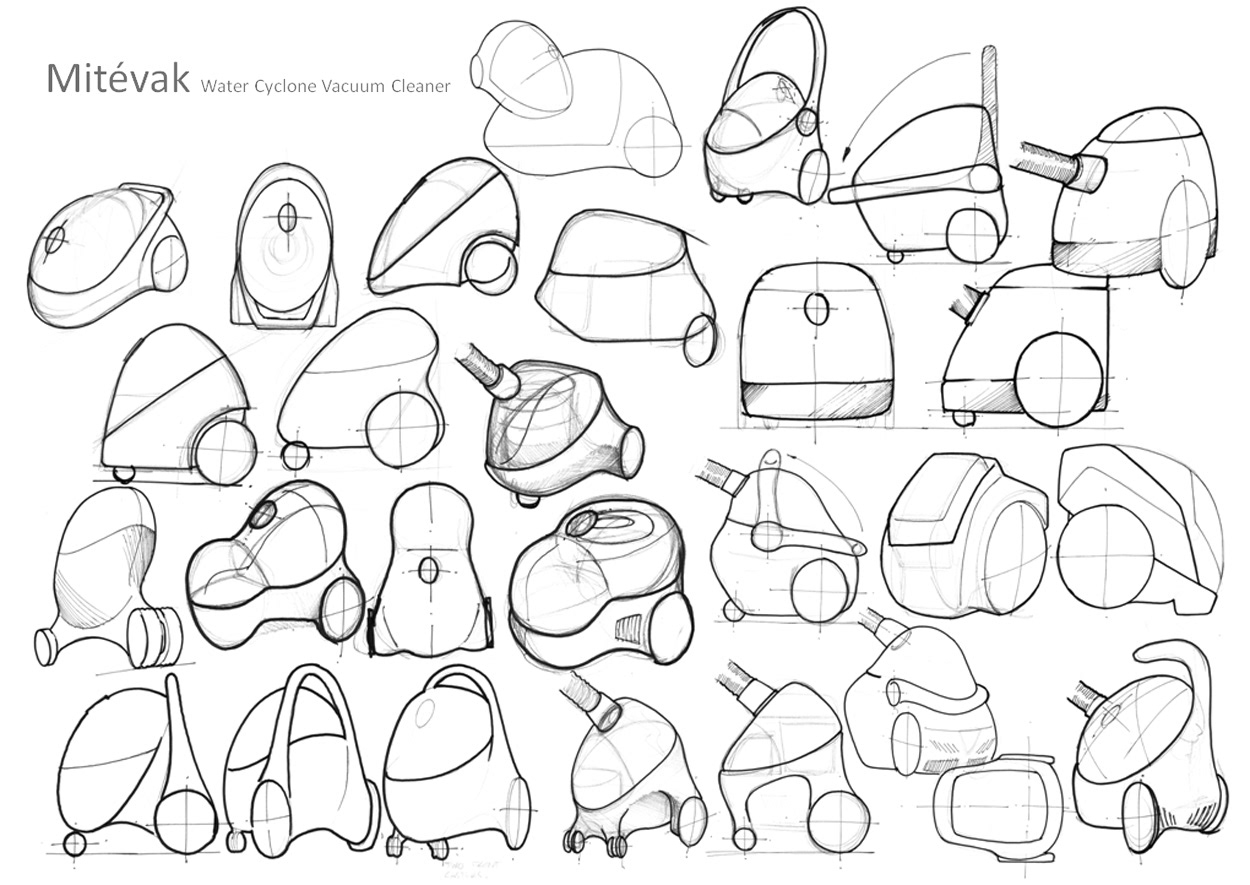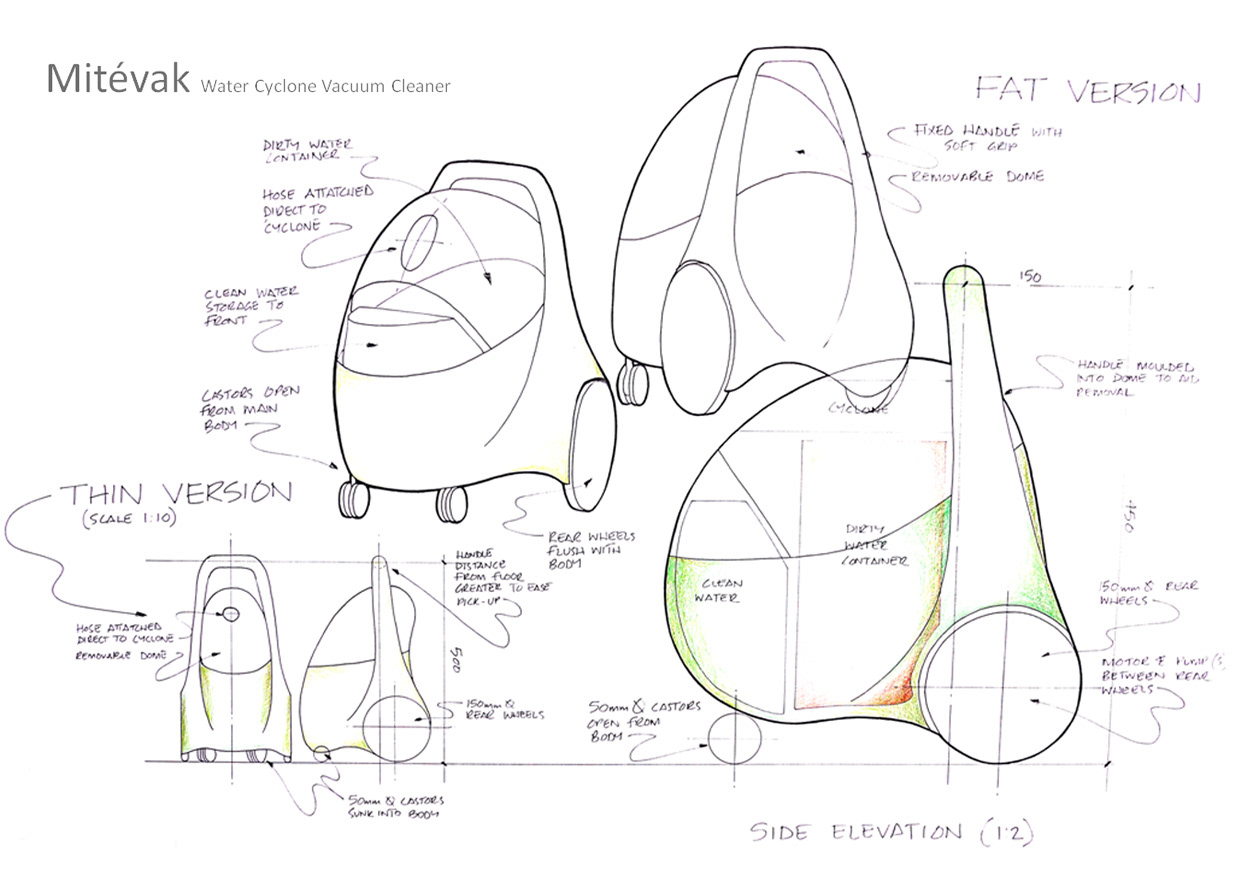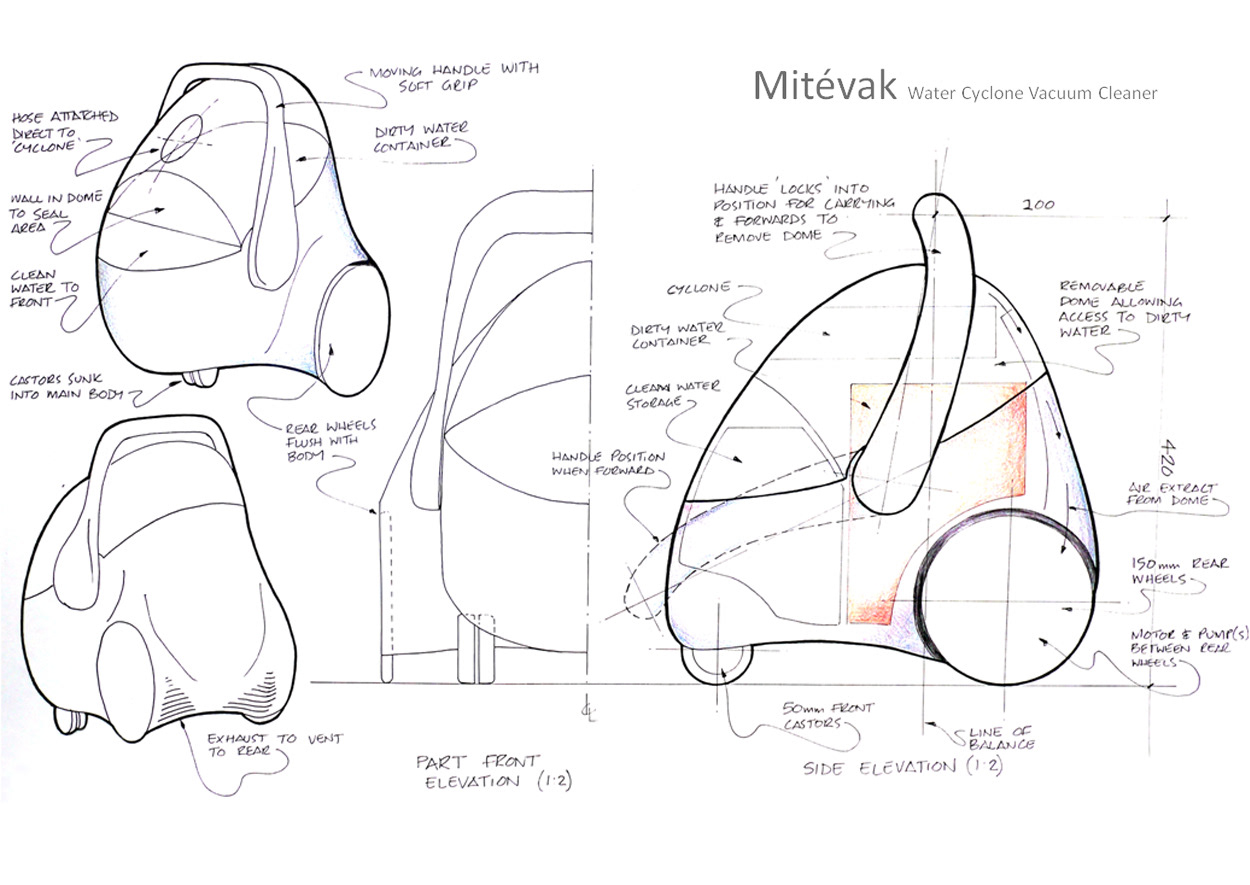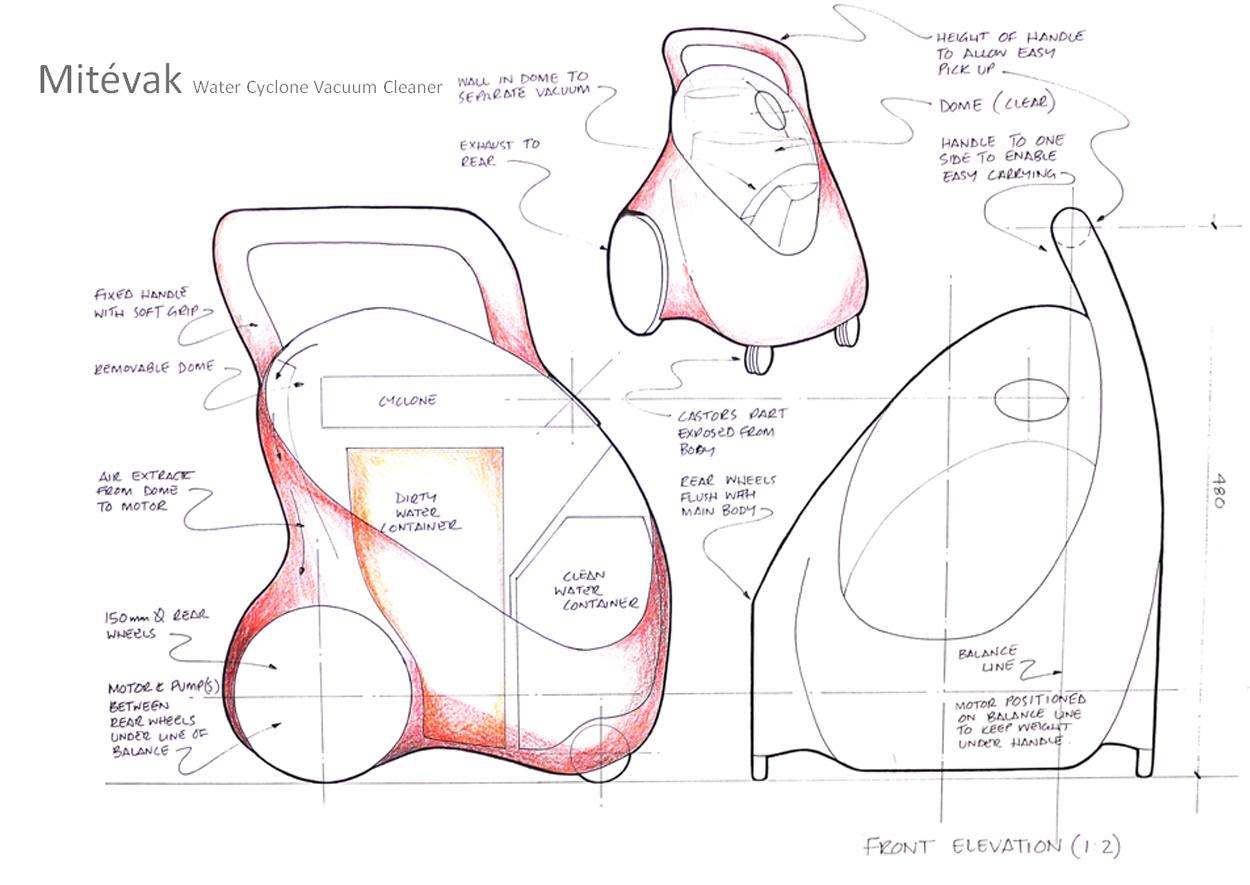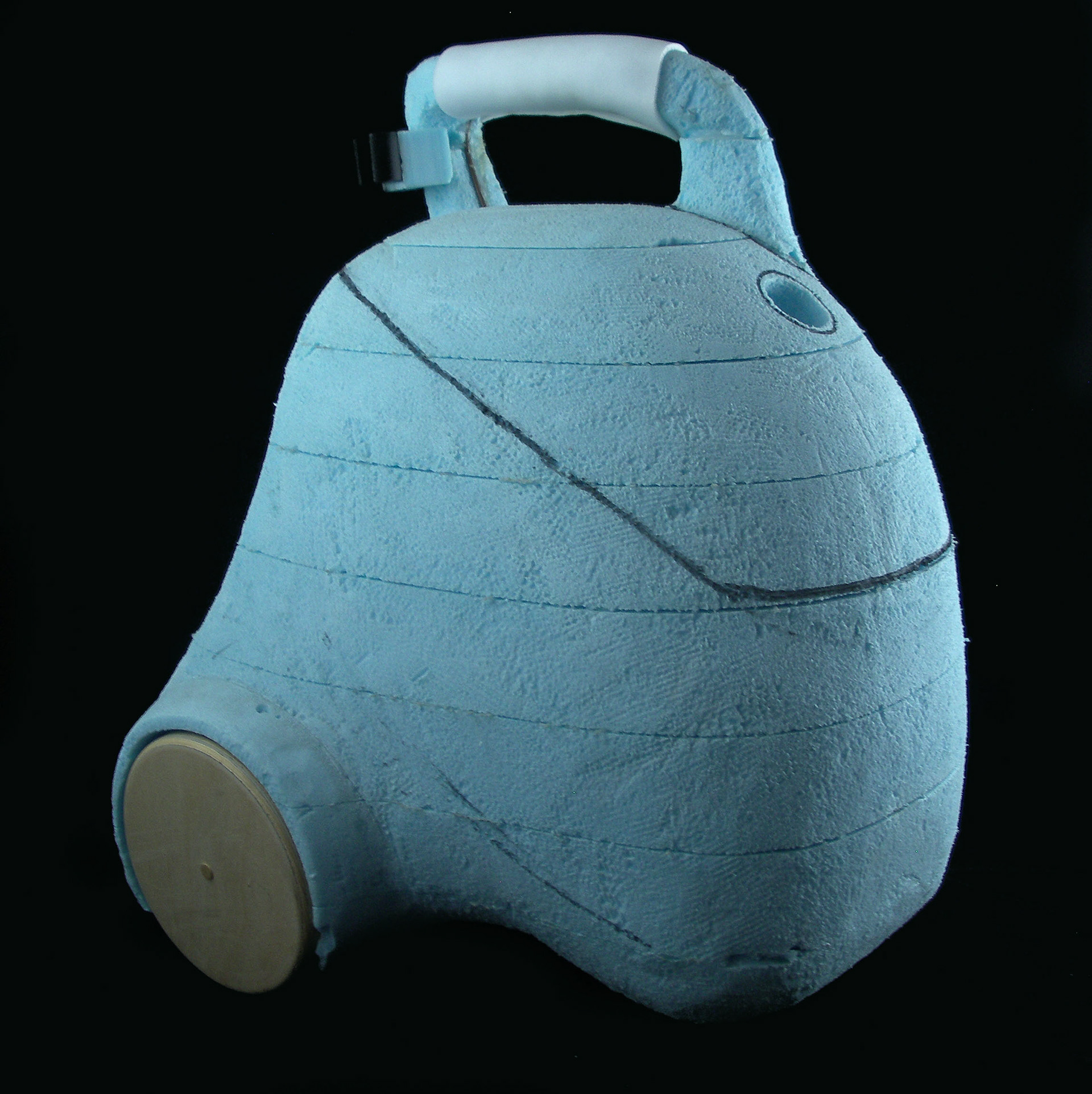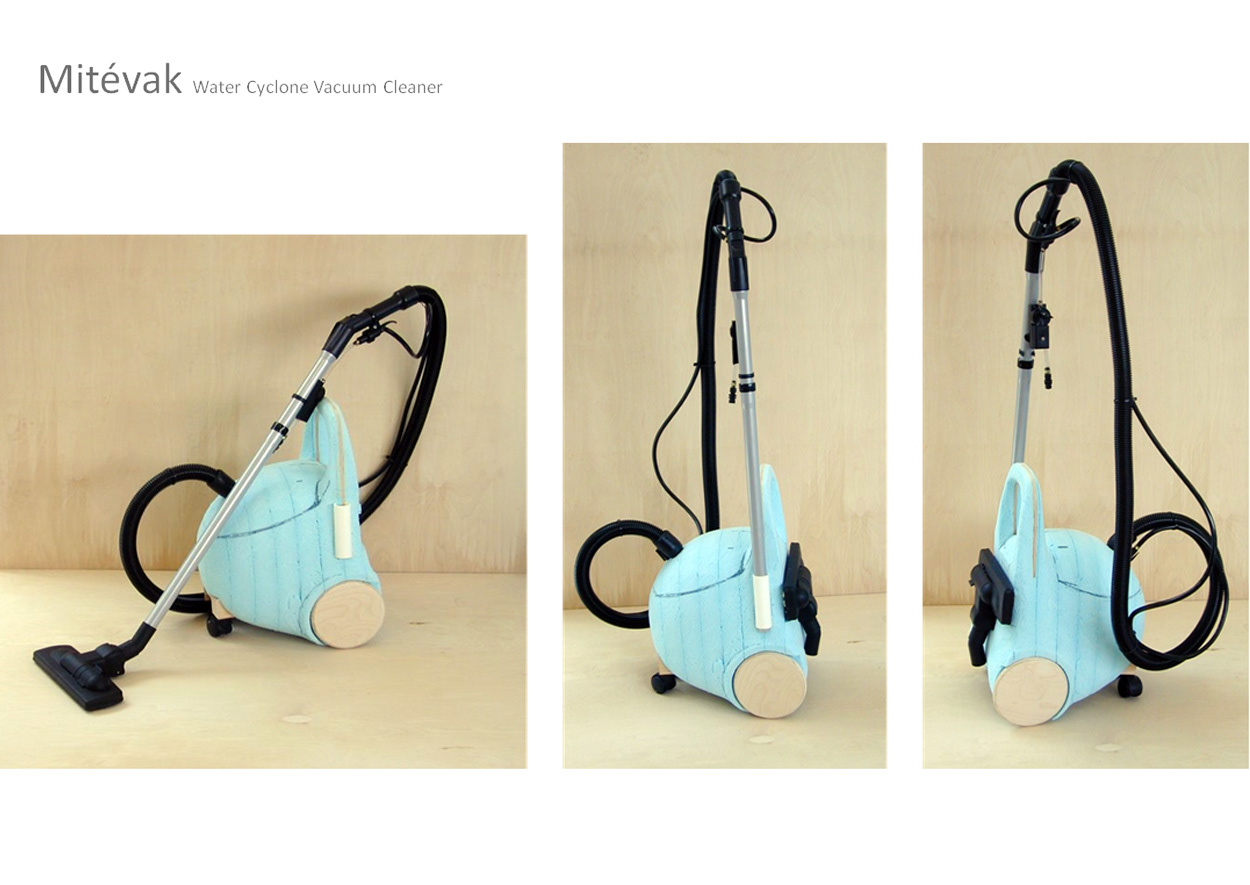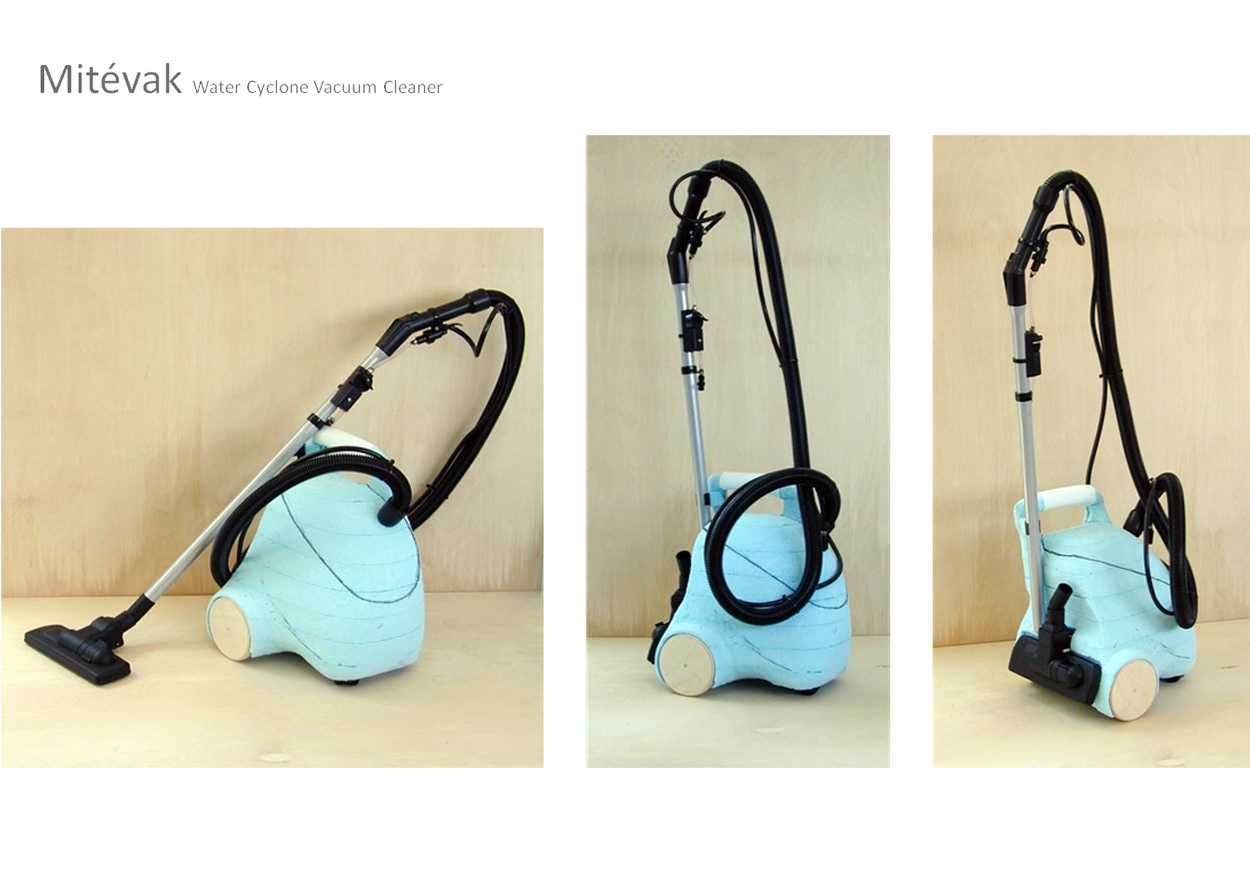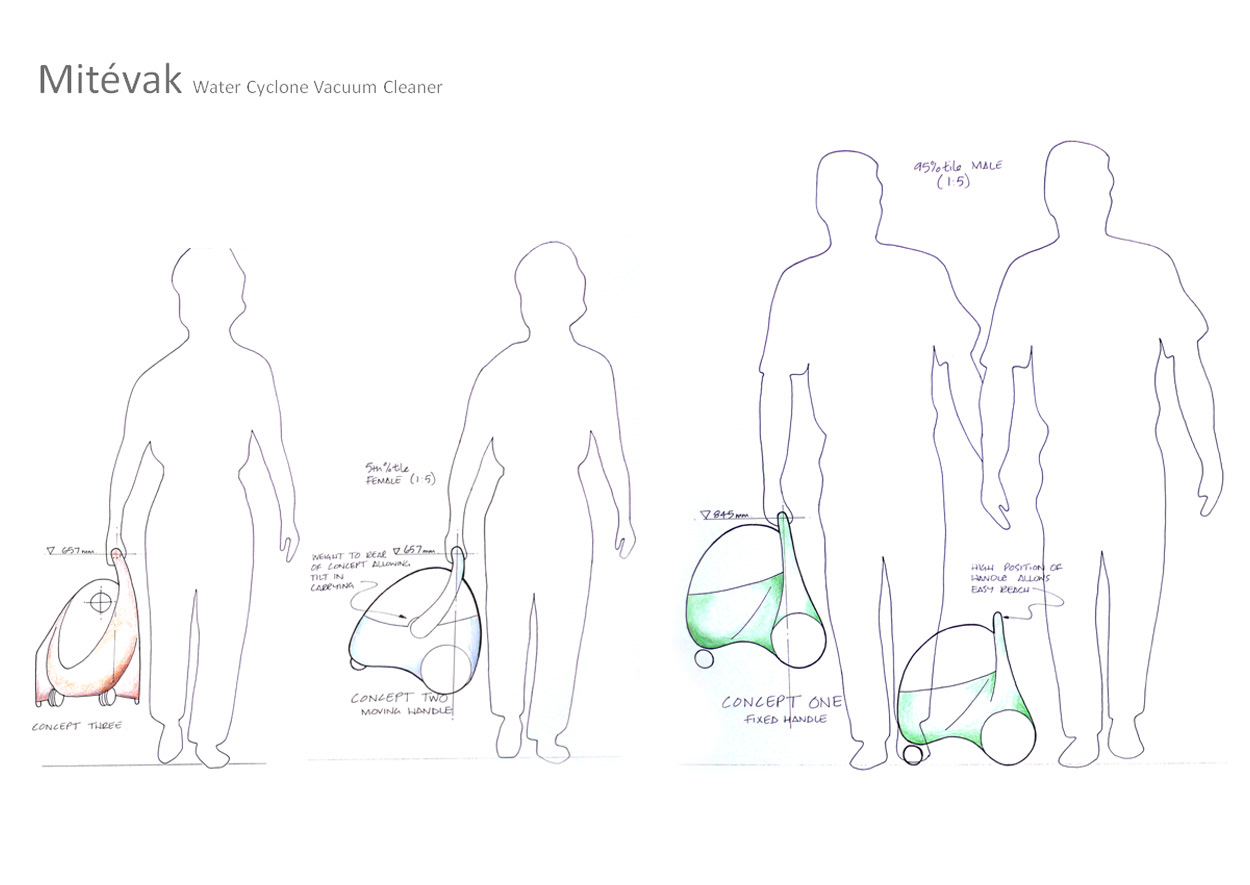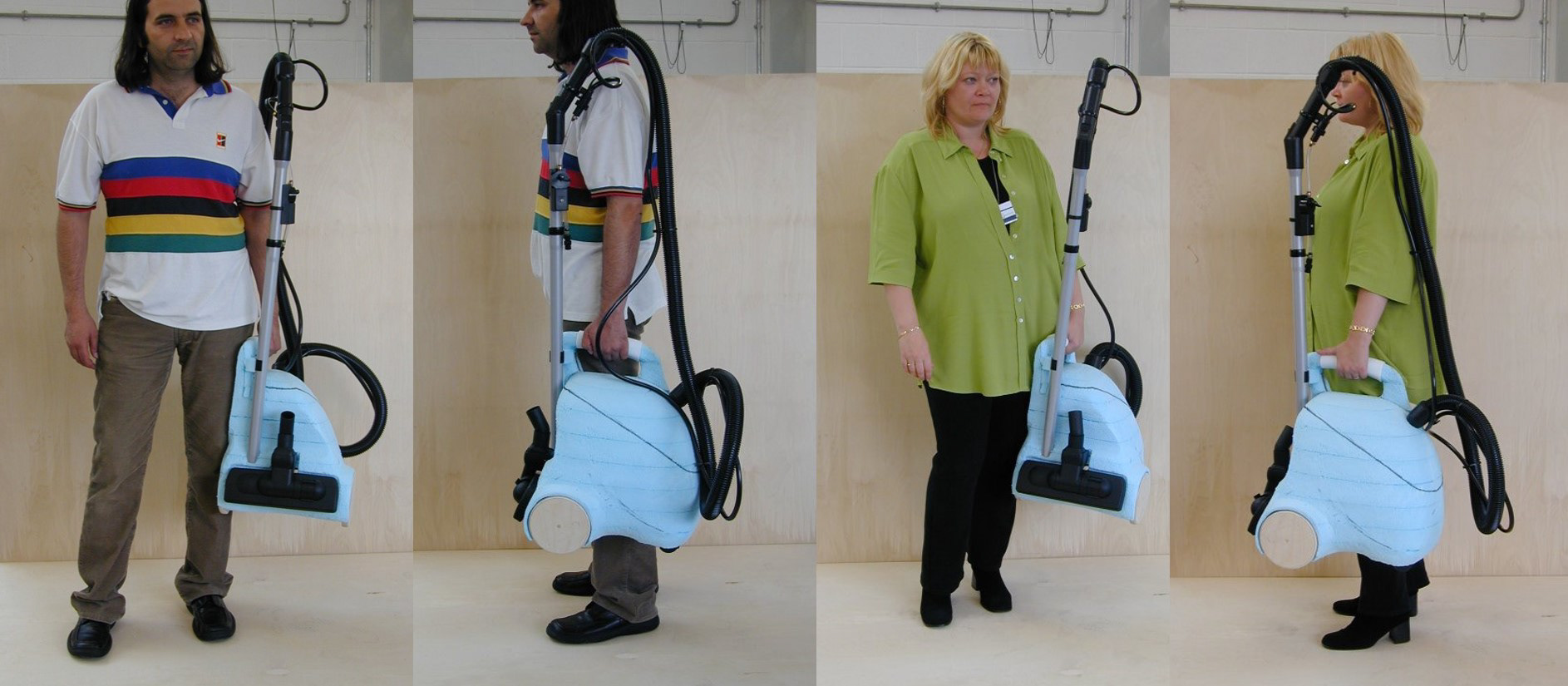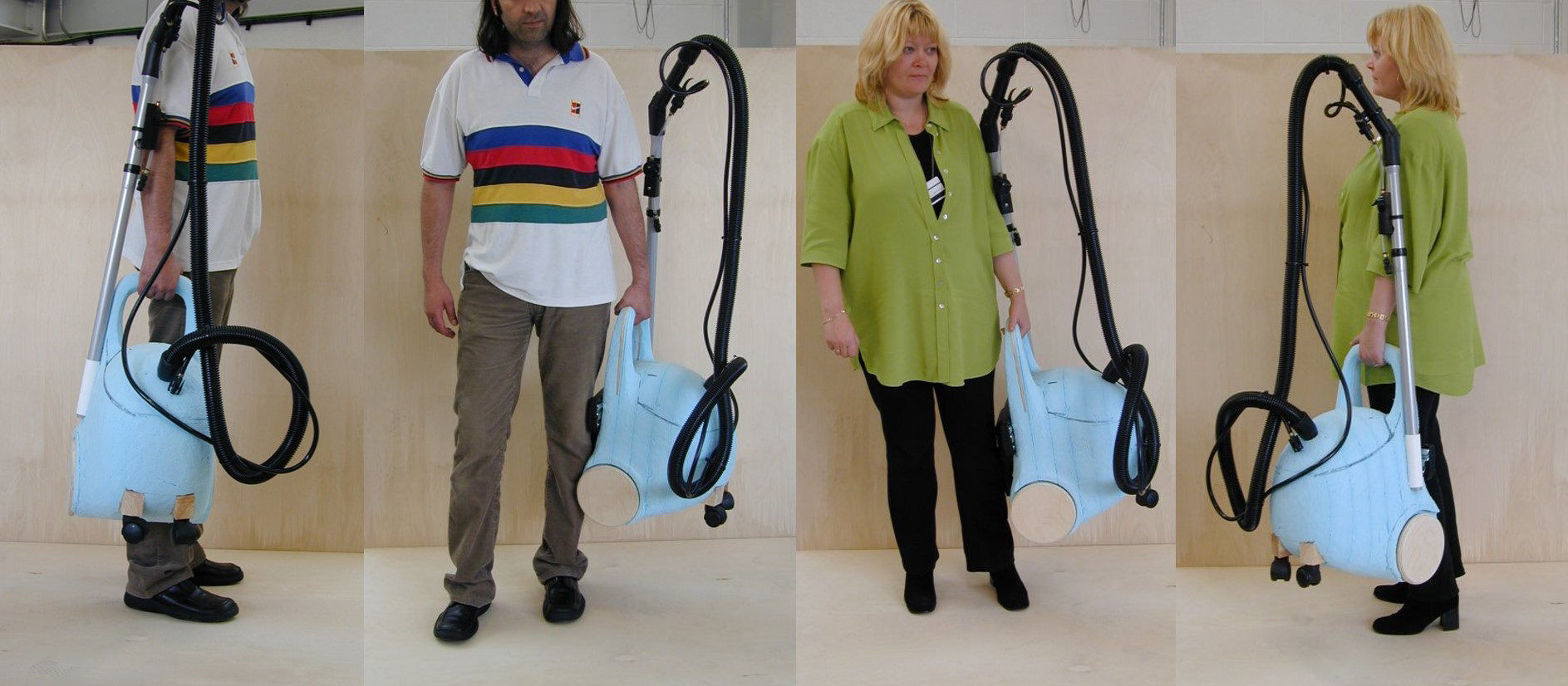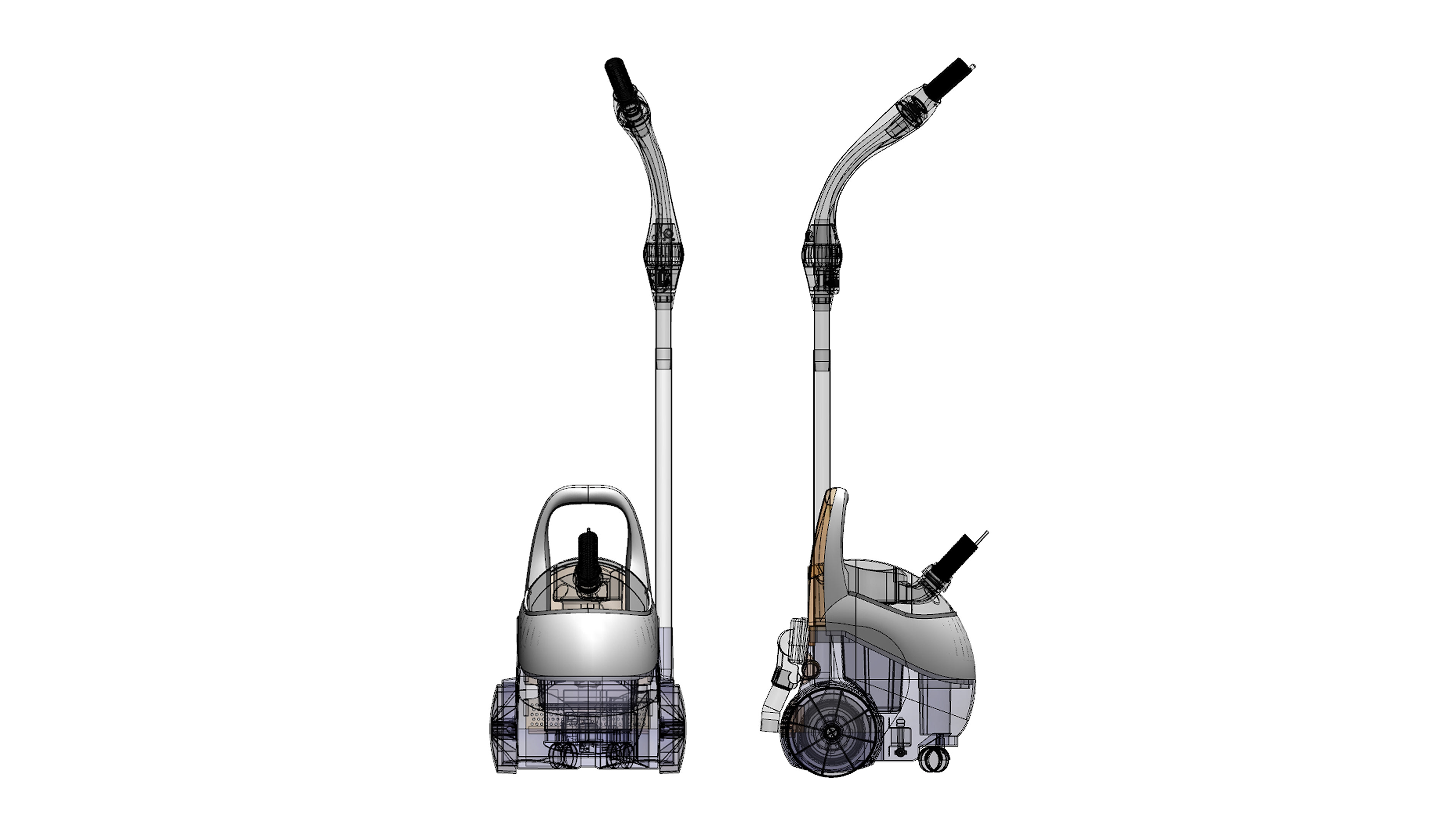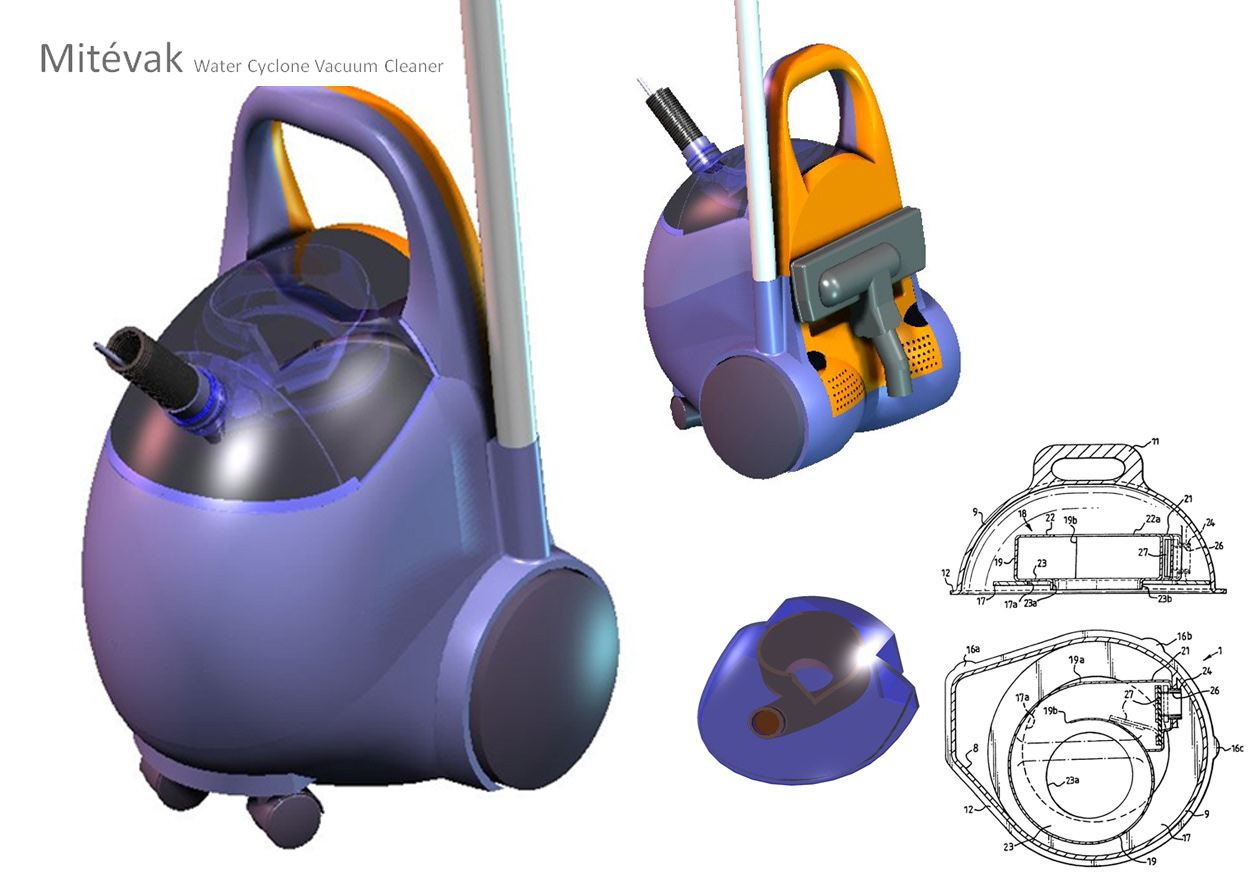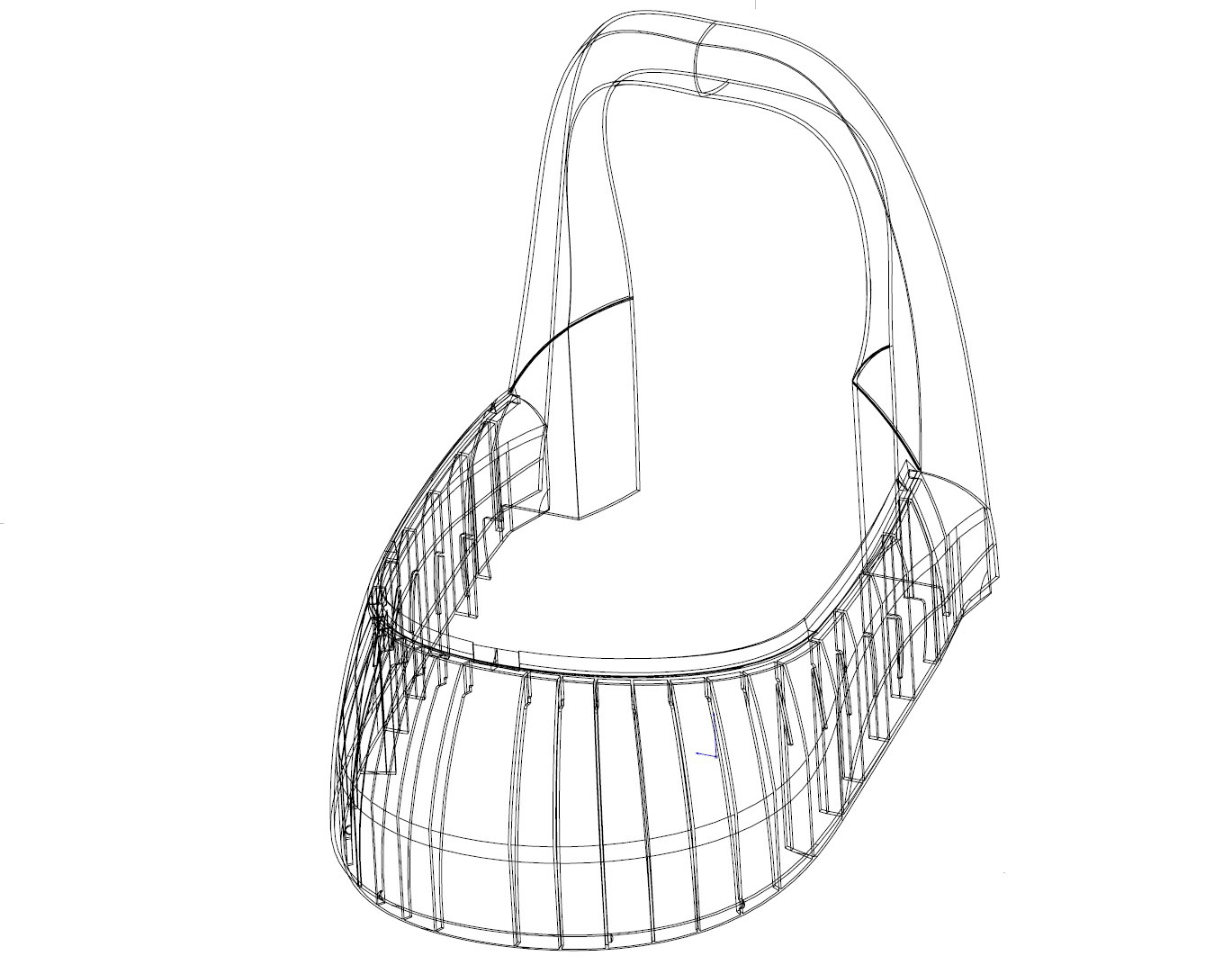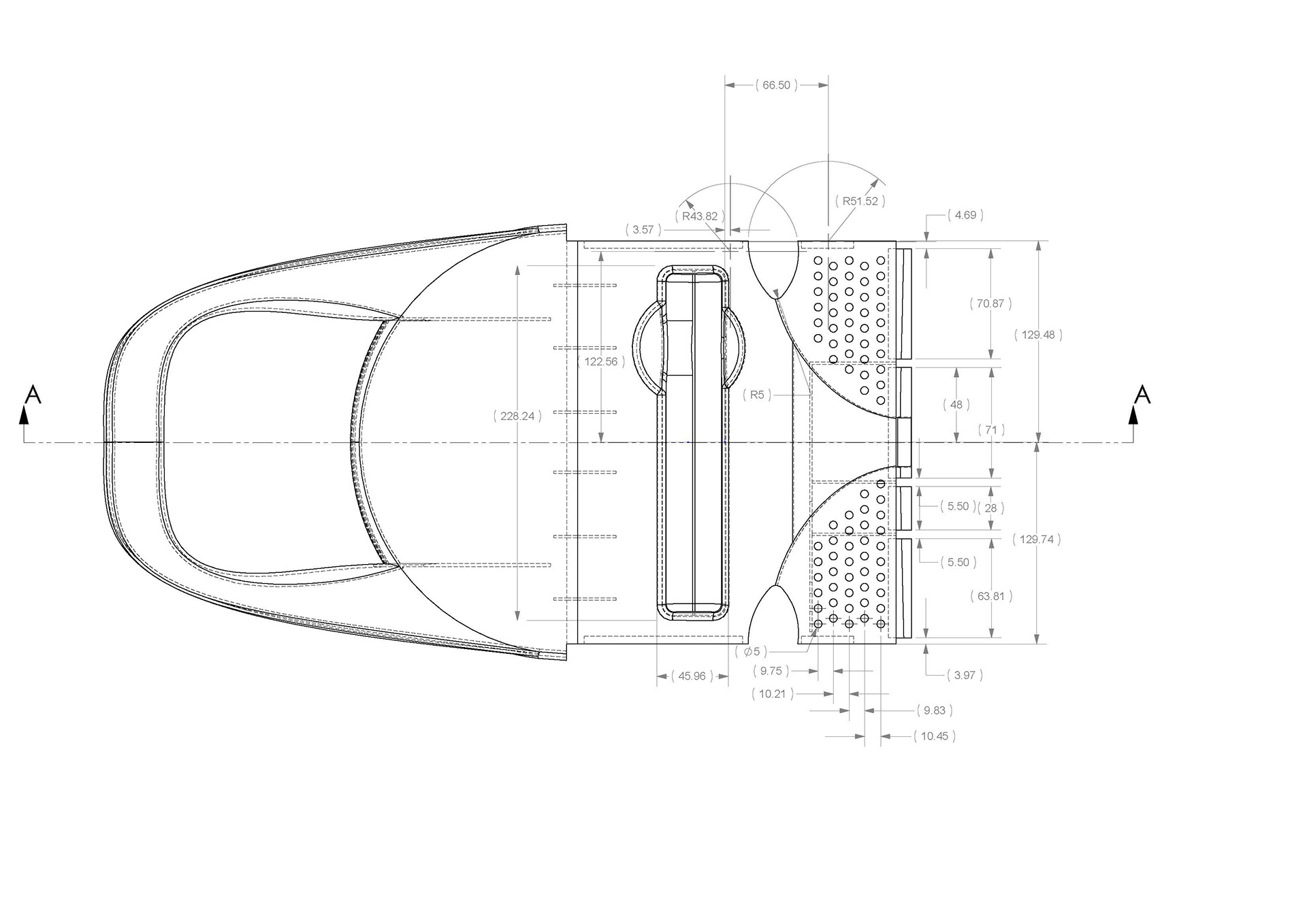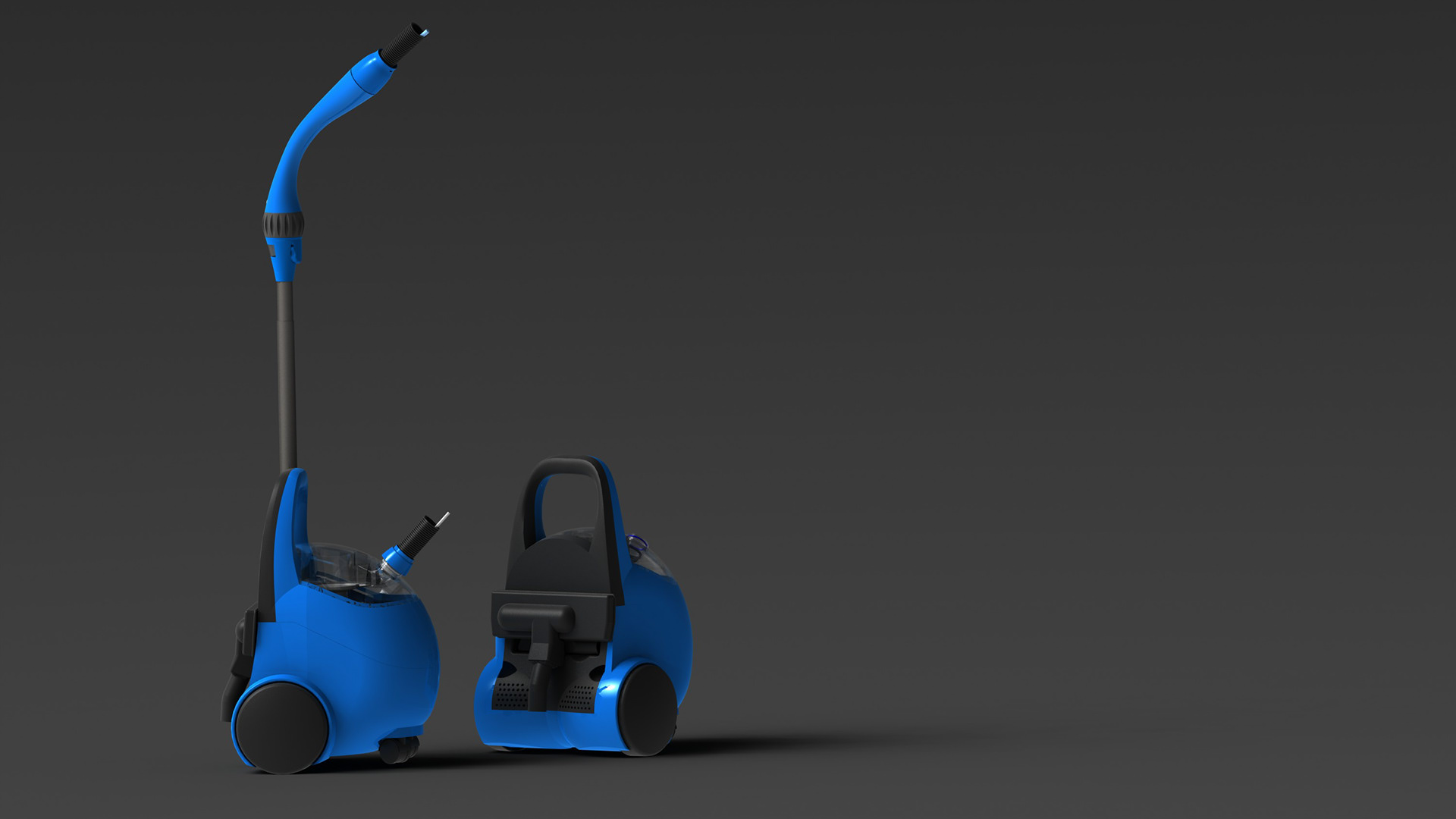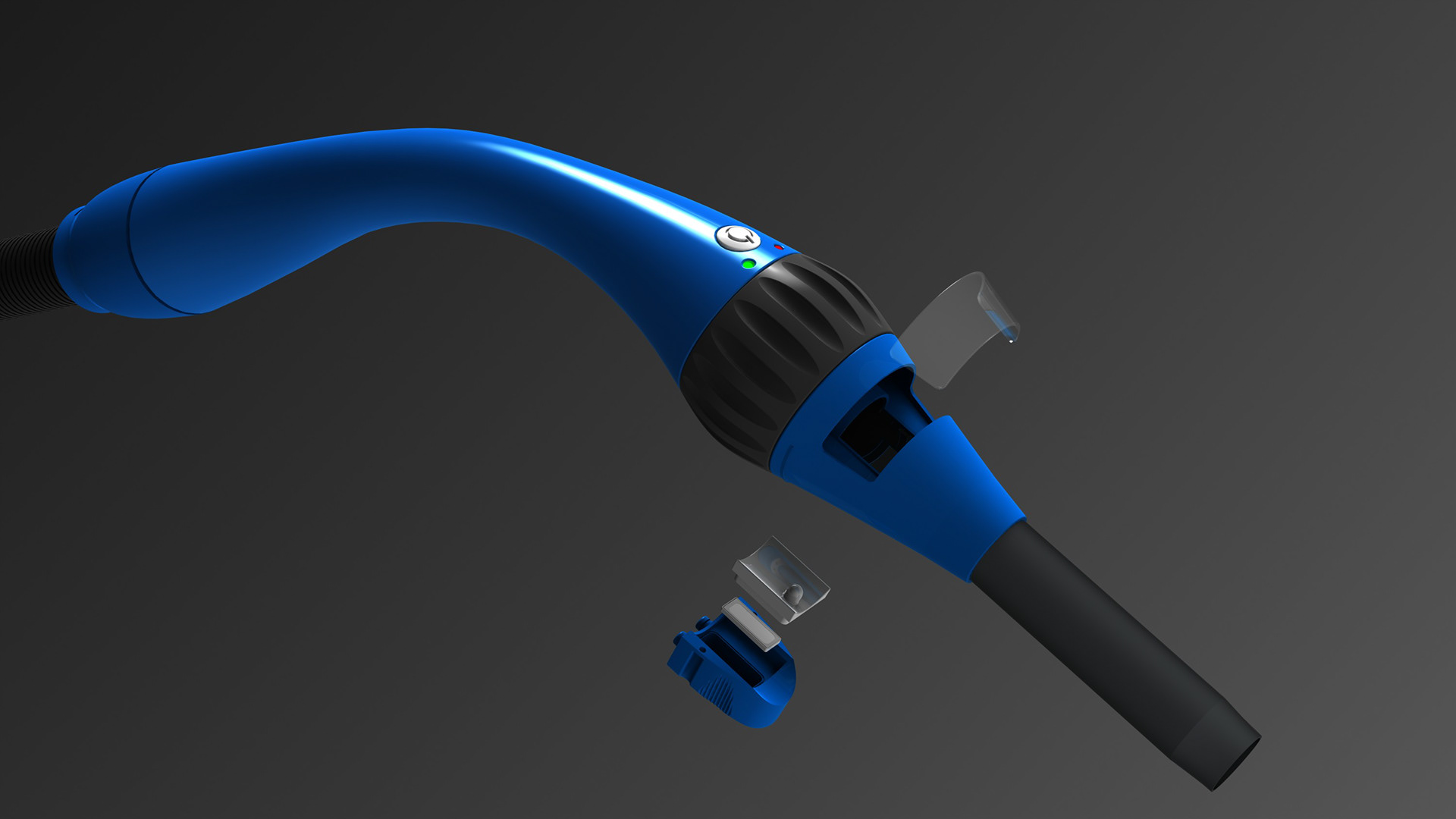Mitévak - Water Cyclone Vacuum Cleaner
Stimvak Ltd
User Centred Research; Ergonomic Research; Existing Product Audit; Competitor Analysis; Concept Design; Concept Models; Ergonomic Assessment: Component Integration; Test Rig Prototypes; Design For Manufacture; Intellectual Property Integration
SolidWorks CAD full assembly model engineered ready for first stage prototyping
Stimvak Ltd
User Centred Research; Ergonomic Research; Existing Product Audit; Competitor Analysis; Concept Design; Concept Models; Ergonomic Assessment: Component Integration; Test Rig Prototypes; Design For Manufacture; Intellectual Property Integration
SolidWorks CAD full assembly model engineered ready for first stage prototyping
Stimvak Limited, an established manufacturer of industrial cleaning equipment commissioned the design and development of a domestic cleaner incorporating their patented water cyclone technology, a method for adding water to the airflow stream to dampen the collected material so that it can be poured down a drain - without releasing dust molecules back into atmosphere whilst doing so. The system was already proven on their existing industrial cleaners.
The design process of just under one year took the design from blank page to full CAD assembly to enable engagement with major plastics manufacturers, with assembly and test to be done in-house. The project was unfortunately abandoned at the commit to tooling/pre-production stage, so an initial functional prototype was never achieved.
The design process of just under one year took the design from blank page to full CAD assembly to enable engagement with major plastics manufacturers, with assembly and test to be done in-house. The project was unfortunately abandoned at the commit to tooling/pre-production stage, so an initial functional prototype was never achieved.
Initial concepts were focused down to three, with two fabricated to full size ergonomic test rigs with built in weight/wheels and strength added to assess ergonomics - usability, manoeuvrability and carrying. It was a desire to have all the attachments located on the body and to enable a one-handed carry, to keep one hand free to hold onto a handrail when carrying upstairs - a notable issue highlighted from my research gathered.
A unique water switch was developed for the wand handle that sent the water to enter the airflow either at the top of the wand handle or to the cleaning head at the floor. The water jet utilised a removable and cleanable water filtration system. Power was taken up to the wand handle through the air hose via an internal tube so that the on/off switch and LED indicators could be located on the wand. Detachable contacts were embedded into the hose break point at the cyclone opening.
A unique water switch was developed for the wand handle that sent the water to enter the airflow either at the top of the wand handle or to the cleaning head at the floor. The water jet utilised a removable and cleanable water filtration system. Power was taken up to the wand handle through the air hose via an internal tube so that the on/off switch and LED indicators could be located on the wand. Detachable contacts were embedded into the hose break point at the cyclone opening.
